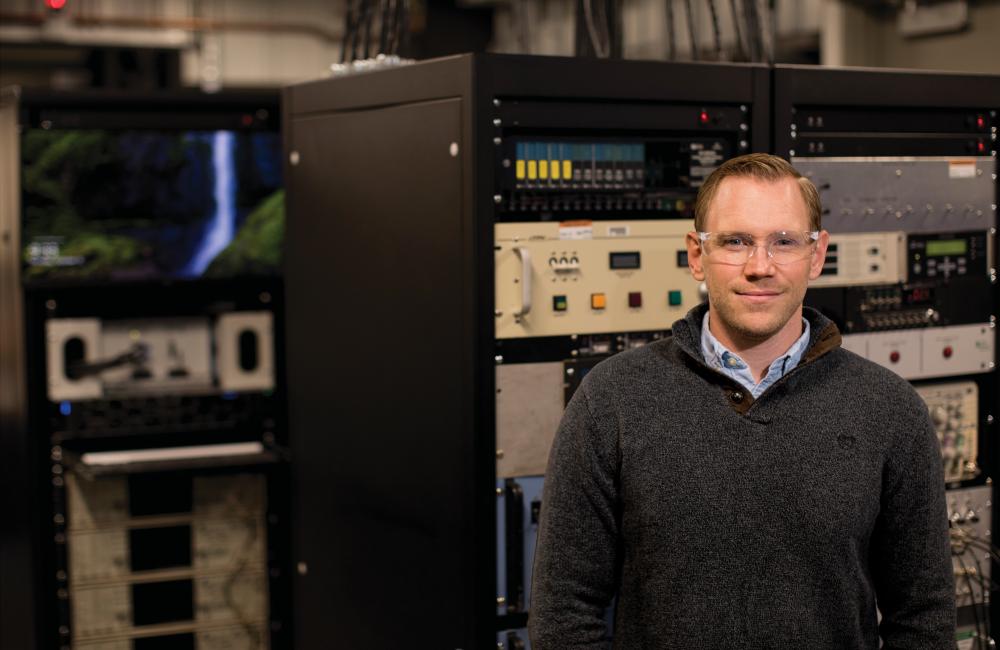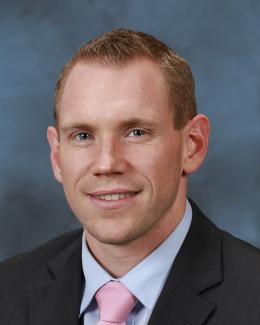Elijah Martin. Image credit: Carlos Jones, ORNL
Elijah Martin vividly remembers the first time he heard the word “plasma.”
His 11th grade chemistry teacher at Hendersonville High School in Hendersonville, North Carolina, Frederick Van Itallie — Dr. V.I. to his students — was explaining the states of matter to the class.
“He was going through the phases of matter — ‘A solid will impart more energy into a system, and it will turn into a liquid; add a little bit more energy to get a gas; add a little bit more beyond that, it will transition to a plasma,’” Martin recalls. “And I raise my hand and ask, ‘What's plasma?’”
Perhaps Dr. V.I. didn’t hear him ask, but Martin didn’t get an answer, and it launched him on a journey that continues today. Plasma, he discovered, is a highly ionized gas containing an approximately equal number of positive ions and negative electrons.
“For the first time in my life, I went to the library on my own accord and looked it up,” he said. “It was like a switch flipped in my head, and I knew I was going to spend the rest of my life studying this.”
Martin credits his Christian faith for keeping him focused on his scientific pursuit.
“I feel very lucky that I found my path and I own that up to God,” he said.
He went on to study physics and nuclear engineering at North Carolina State University, earning two bachelor’s degrees. He completed his doctorate in nuclear engineering in 2014, also from NC State.
Now a scientist in ORNL’s Fusion Energy Division, Martin seeks to investigate and quantify radiofrequency wave absorption phenomena that occur in edge plasma through a combination of novel laser-based spectroscopy and advanced quantum mechanical modeling.
For the past several years, Martin has been developing and assembling a first-of-its-kind laser-based diagnostic tool that can study the underlying physics at work. The next step is to scale that diagnostic tool to operate in the DIII-D National Fusion Facility in San Diego so measurements can begin in spring 2021, coinciding with the installation of a new radiofrequency antenna.
“Because of this tool, we’ll be able to study physics at a level that is 10 times more advanced than anyone has done before,” he said.
The diagnostic system will beam a precisely tuned laser across a band within the plasma and will map the electronic quantum mechanical information of the atoms present. Using data he collects to refine predictive computational models, Martin aims to provide insights that could accelerate progress toward continuous operation of fusion reactors.
“It’s exciting to think that we could take the process that's going on in the sun and control it to generate power,” he said.



